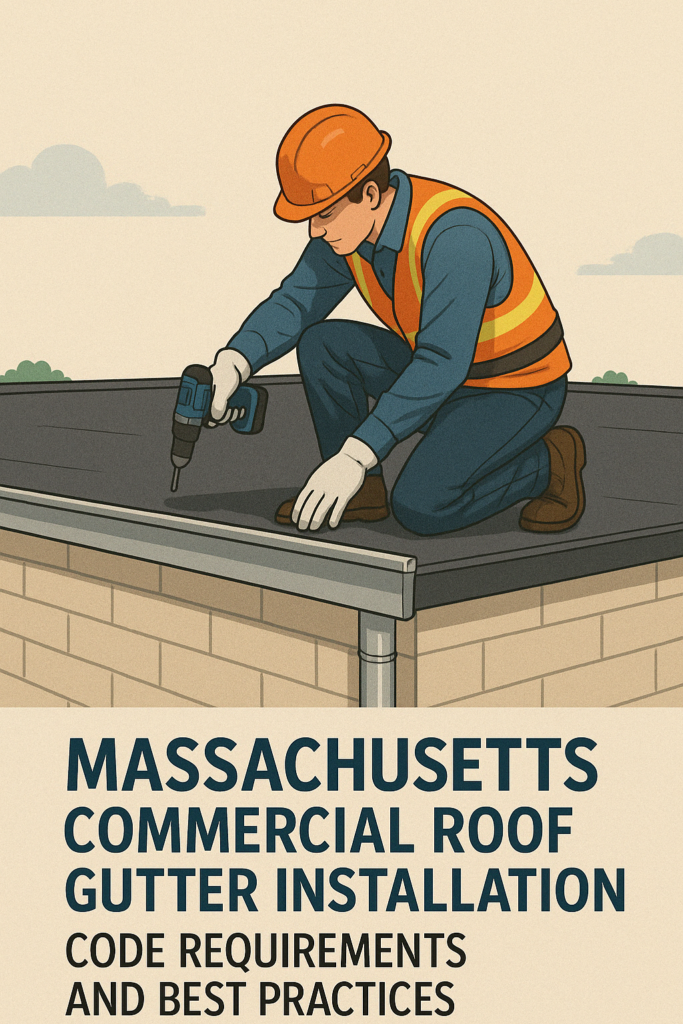PVC Waterproofing: All You Need to Know About PVC Membranes
Reading Time: 7 minutesWaterproofing membranes are critical to modern roofing systems, providing a crucial barrier against water infiltration and extending the lifespan of structures. Among the various waterproofing solutions, PVC (polyvinyl chloride) membranes have become particularly popular due to their robustness, flexibility, and ease of installation.

This guide delves into the advantages of PVC waterproof membranes for flat and other roof types, explores their types and specifications, answers common questions, and offers DIY tips.
PVC Waterproofing: Perhaps the Best Solution for Your Roof
Up to 20 years of trouble-free operation. One of the basic requirements for any waterproofing material is the most extended service life, so it does not have to be repaired or replaced after a few years by dismantling and reassembling the entire roof structure. It all depends on the chosen material and the professionalism of the roofers, but statistics show that properly installed and maintained PVC membranes can last over 20 years. Its long service life is due to its resistance to weather conditions, high and low temperatures, high winds, some chemicals, and so on. However, it is better to protect membranes from ultraviolet radiation since sun rays can lead to PVC membranes fading, loss of elasticity, and cracks.
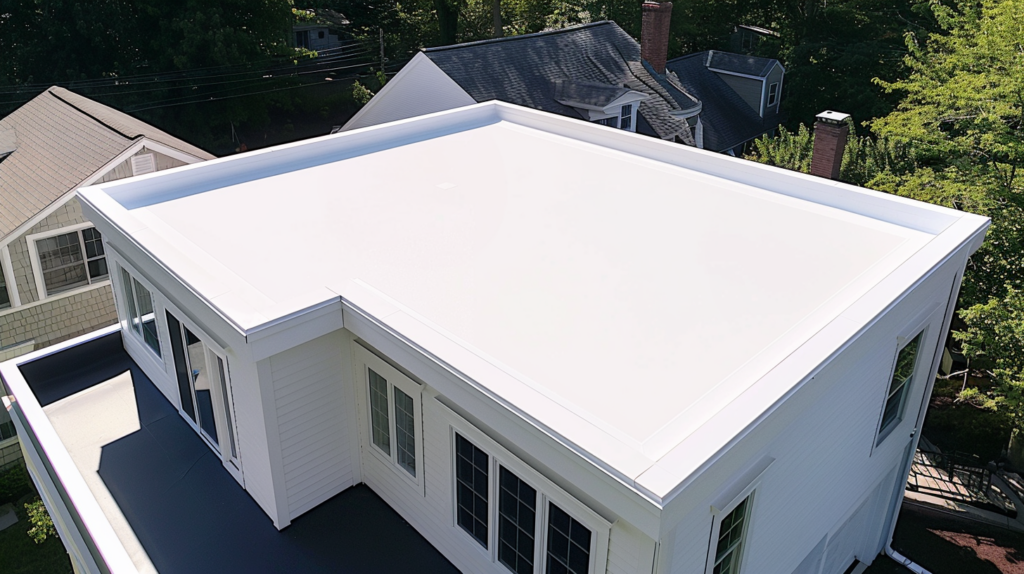
One more key factor is that PVC membrane is suitable for almost any roof and surface. PVC single-ply membranes are universal and suitable for waterproofing any roofing surface, not only flat roofs, but also curved, gable, and even dome structures. Thanks to their flexibility and elasticity, membranes can adapt to the thermal expansion of other building or roofing materials.
Prompt preparation and installation. Of course, the installation of any roofing materials should be carried out by experienced contractors. Still, you can solve some installation or preparation tasks with PVC membranes if you have at least a little experience in construction and follow safety precautions when working at height. Moreover, since PVC waterproofing membranes are installed quickly and easily, you will pay less to the roofers for the work.
Environmental trends. PVC roofing membrane systems are eco-friendly as they can be recycled at the end of their life cycle. Additionally, their energy efficiency helps lower the building’s overall carbon footprint.
PVC Waterproof membrane and other waterproofing options
1. EPDM. Even though the main market competitor of PVC single-ply membrane costs a little less and lasts about the same, it has critical disadvantages. EPDM membrane installation takes much more time, ultimately affecting the cost of the work. In addition, this material is not energy-efficient, so you will overpay for the selected PVC waterproofing membrane every month. However, with proper installation, EPDM can also easily handle the ponding roof option.

2. TPO. Nowadays, the average PVC waterproofing membrane is another US-made competitor. This relatively innovative single-ply material appeared on roofs not so long ago (when compared with PVC and EPDM). It’s called TPO. It can also be energy efficient, but be aware of the potential disadvantages of this membrane. As experts note, TPO membranes’ performance properties, including durability and longevity, have not been thoroughly studied, and the quality of the material varies greatly depending on the brand and manufacturer.
3. Bitumen. Even though this traditional roofing technology is considered time-tested and one of the most common in our country, it has its weaknesses—for example, extremely labor-intensive roof works and increased requirements for the roof frame due to its weight. In addition, bitumen is believed to be not so environmentally friendly, and in the summer the material can become very hot, which is why you will spend more on air conditioning.
4. Liquid-applied membranes. One of the innovative alternative solutions for waterproofing PVC sheet membranes is liquid-applied materials. They have some pros, but their installation requires the involvement of specialized contractors, the materials themselves are expensive, and during the installation process, the membranes are susceptible to weather conditions. On the other hand, PVC membranes can be installed even on damp substrates and under green roof constructions.
Types and Specifications of PVC Waterproofing Membranes
Fiberglass or polyester reinforced. Typically, synthetic polyester or fiberglass mesh is used for these purposes. Polyester-reinforced membranes are more suitable for commercial and industrial buildings than for private houses and cottages.
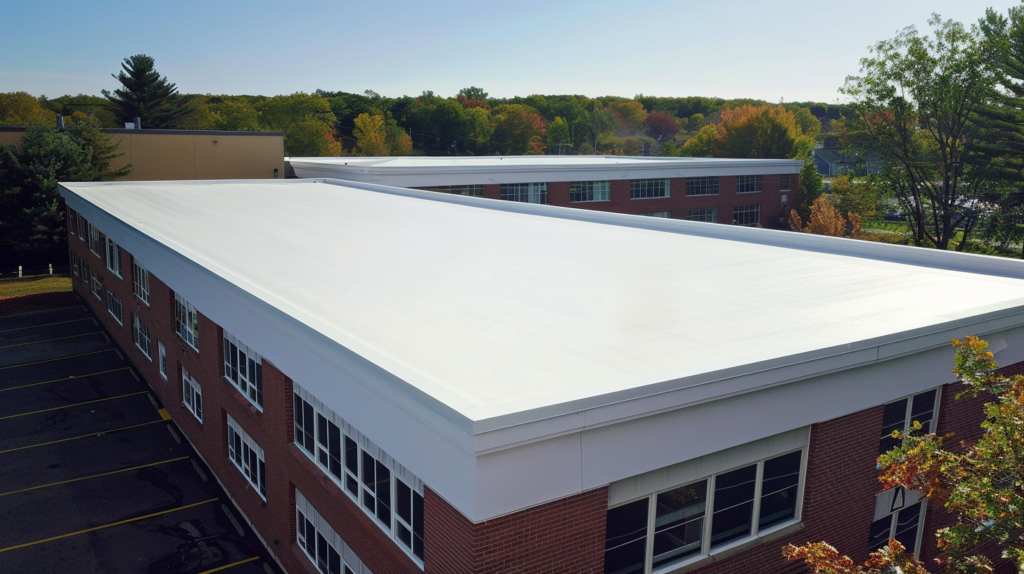
Non-Reinforced. Unlike polyester-reinforced PVC waterproof membranes, which we talked about above, these membranes weigh less, are more flexible and elastic, and are more designed for the roofs of residential buildings, garages, and outbuildings.
Fleece-Backed. Featuring a fleece layer on the underside, these waterproofing materials provide additional protection and cushioning, making them perfect for reroofing projects over existing roofs.
PVC Waterproofing Membrane Specifications
Thickness. Typically, thickness is ranging from 1.2 mm to 2.0 mm. The thicker the PVC sheet membrane is for waterproofing, the stronger and more resistant it is to penetrations. However, do not rush to choose the material with maximum thickness, as it will most likely not be lightweight and flexible enough for a private house, and it will be much more difficult to install. However, even thin membranes have 50-year proven effectiveness and ability to prevent water from penetrating the building structure
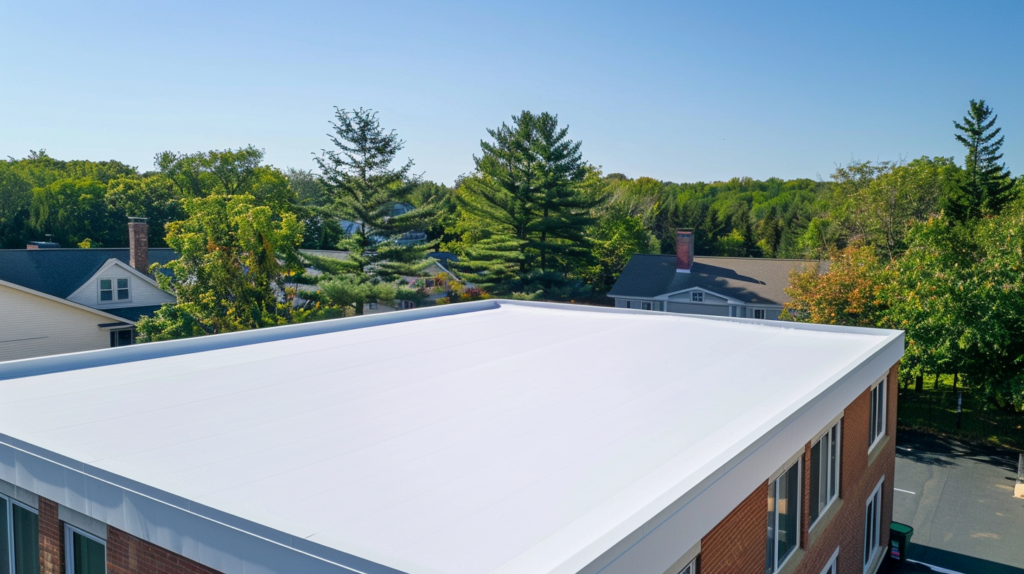
Width and Length. Available widths range from 3 to 9 feet, with roll lengths:
- Up to 100 ft (30.5 m) for 40 mil rolls
- Up to 80 ft (24.4 m) for 50 mil rolls
- Up to 60 ft (18.3 m) for 60 mil rolls
Of course, you should choose the width and height of the PVC waterproofing membrane based on the size of the surface on which you want to lay it. PVC membranes can be cut, but the fewer cuts on the surface, the better.
Color. If the PVC waterproofing membranes will lie on the surface, we recommend choosing light-colored materials, as they heat up less in the sun. These parameters can be neglected if the suitable PVC waterproofing membrane is mounted as an inner layer. Black, grey, and white PVC membranes are equally moisture-resistant and leak-resistant.
Another PVC waterproofing membrane specification is fire resistance. Many roofing membranes, including PVC waterproof membranes, are treated with fire-resistant additives. We recommend that you consult with roofers in advance if fire-resistant properties are important to you or if, in your case, it is important to follow specific fire-resistant building codes and safety standards.
Polyvinyl Chloride Membranes DIY Installation Tips
While professional contractor service is recommended, experienced DIY enthusiasts can install waterproof PVC sheet membranes by following these steps:
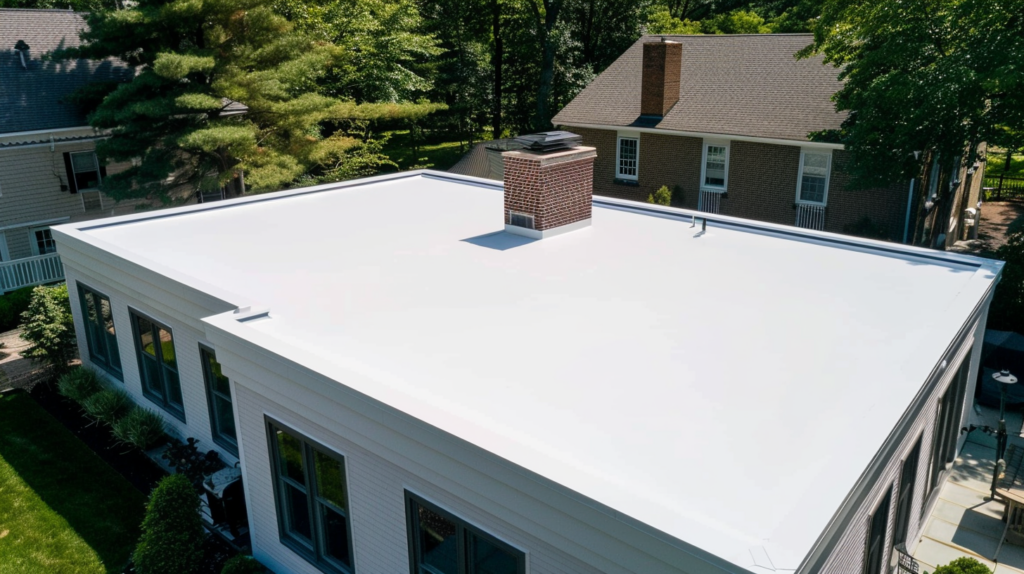
1. Preparation. The first thing you should think about in advance is to clear the surface of anything that could interfere with the membrane. Even small particles of construction debris can ruin several square feet of waterproofing. Another critical stage is repairing the roof surface. If there are cracks, cavities, and other building defects on roof surfaces it may affect the quality of installation. PVC membranes perfectly protect the roof from leaks and have water vapor transmission properties. Nevertheless, there is no need to test the waterproof material with ponding or excessive accumulation. Design a drainage system in advance so that rain or meltwater drains quickly from the roof and does not collect at the lowest point or the corners.
2. Measuring. Before cutting the waterproof membrane, double-check the measurements. Remember that PVC waterproofing membrane materials are laid overlapping, and the weakest points of waterproofing are the joints, especially T-shaped ones, where three sheets of waterproofing membrane meet. Pay attention to corner joints and edges so that the membranes are overlapped and installed with appropriate flashings, plates, etc.
3. Laying the PVC waterproofing membrane. Start from one end of the roof and unroll the membrane carefully. Smooth out wrinkles and air pockets to ensure a flat water-resistant surface. Some membranes, especially thick and reinforced ones, need a little time to “rest” and straighten out on the surface. As a result, the installed membranes create a smooth and even surface.
4. Hot air welded seams. Use a hot-air welding tool to join seams. The best recommendation is to follow the manufacturer’s temperature settings and welding speed guidelines. Ensure continuous, watertight seals along all seams and edges. To add, fully adhered membranes usually have fewer seams.
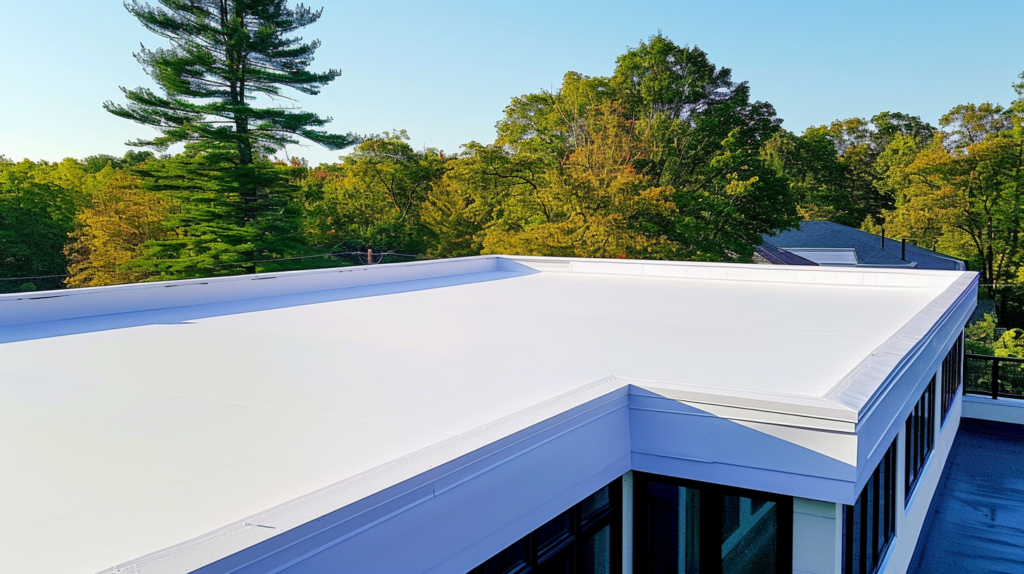
5. Securing the PVC waterproofing membrane. Depending on the type of roof, the type of waterproofing membrane chosen, and the installation method, secure the membrane mechanically, with adhesives, or with ballast. Each membrane (mechanically attached, ballasted, fully adhered) has its pros and cons, so we recommend entrusting the choice to professionals. For example, fully adhered membranes can’t be installed on some base material or using some glues. Pay special attention to flashing and details around penetrations, such as vents and chimneys to prevent leaks.
6. Final inspection. Inspect the entire installation for defects or weak points. You can take your new roof for a short test to be completely confident in a fully adhered or mechanically attached PVC waterproofing membrane. Take the required amount of water in a container or run a garden hose onto the roof, then spray the roof with water to ensure no leaks and drainage works just fine.
PVC Waterproofing Membrane: Ideal Choice or Not?
PVC waterproofing membranes are an excellent choice for most residential and commercial roofs and other construction industry solutions. However, the service life and effectiveness of PVC waterproofing directly depend on the roof’s structural features, the brand and correct type of membrane, the professionalism of the roofers, and the future maintenance of the roof.
Check Our Posts About PVC Roof
Massachusetts Commercial Roof Gutter Installation: Code Requirements and Best Practices
Surely, building owners usually have more questions about whether this type of waterproofing suits their cases. Contact qualified local roofers who will check the project and inspect your existing or designed roof.
Denis is the driving force behind ID Flat Roof, a leading company in Boston specializing in flat roof repair and installation for over 20 years.
Expertise:
Denis excels in PVC, TPO, EPDM, and rubber roofing. His meticulous approach ensures quality and customer satisfaction.
Innovation:
Denis incorporates cutting-edge solutions like skylights and solar PV roofing.




